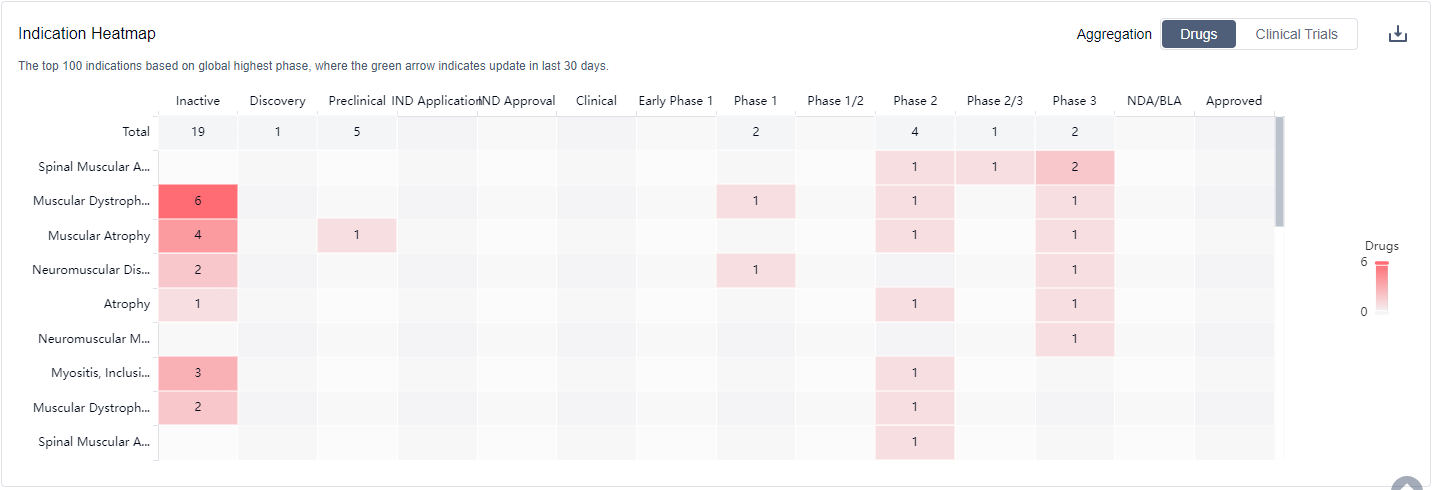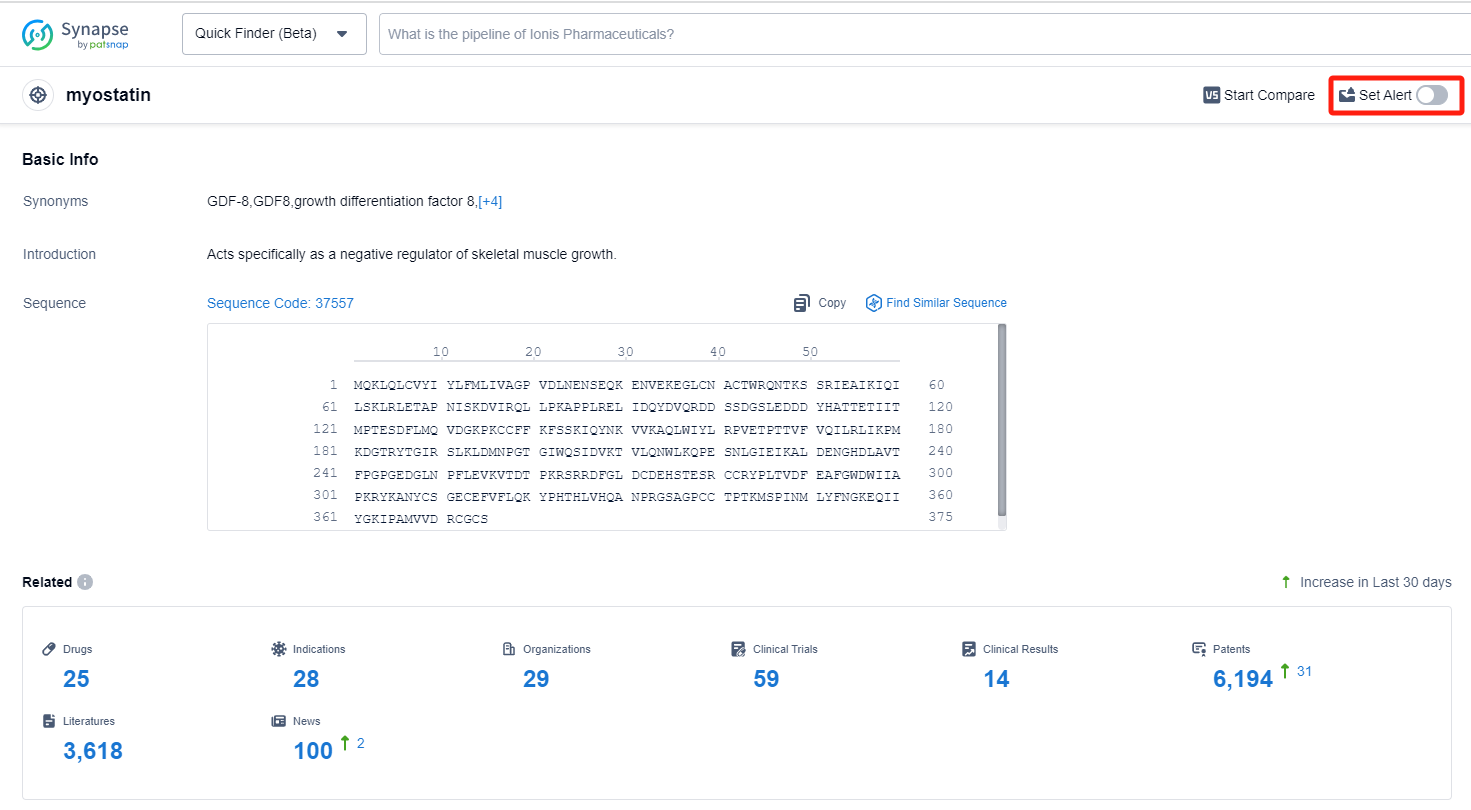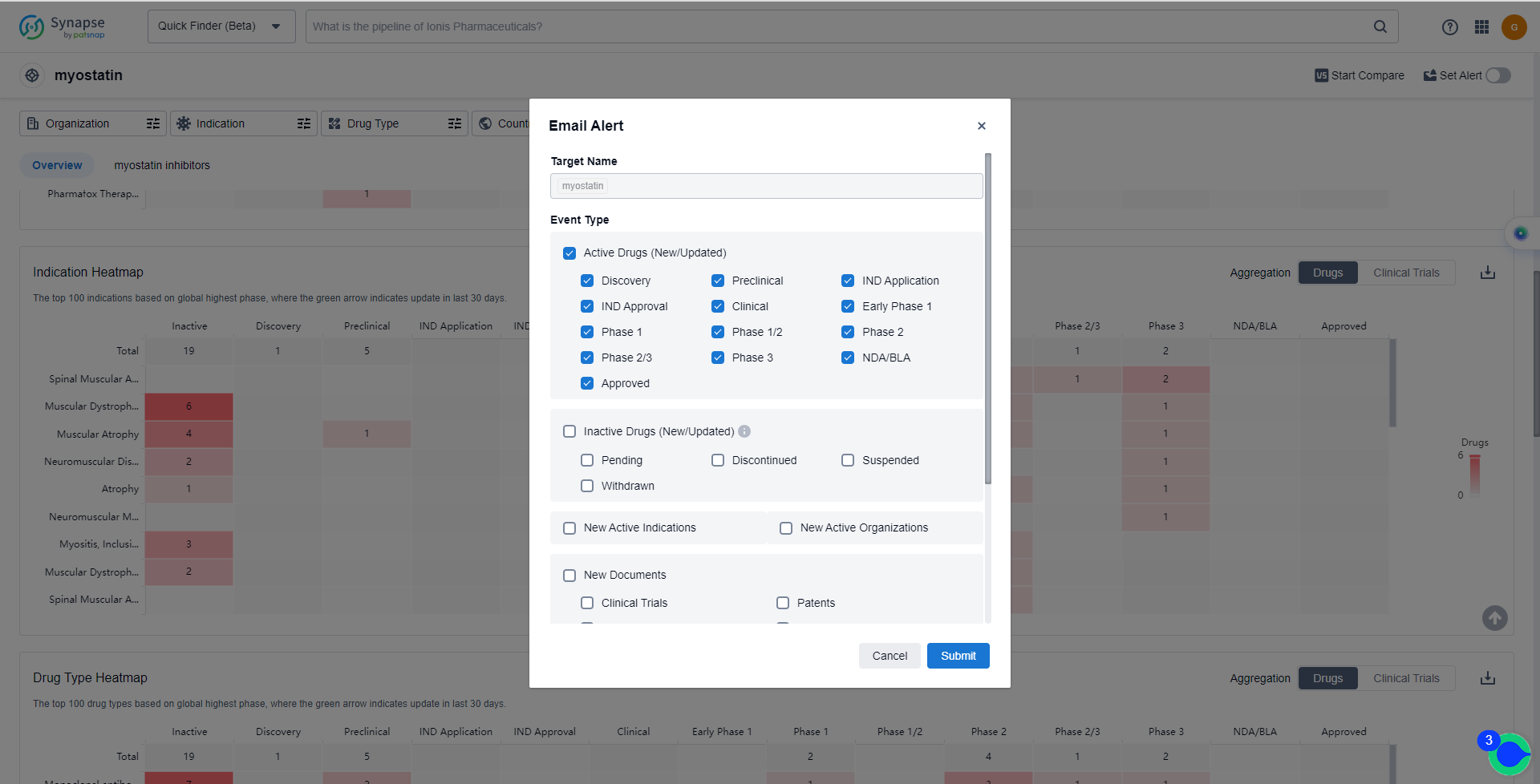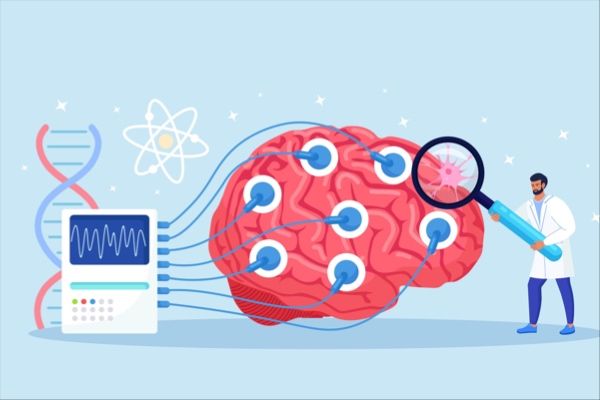What are myostatin inhibitors and how do you quickly get the latest development progress?
Myostatin is a protein that plays a crucial role in regulating muscle growth and development in the human body. It acts as a negative regulator, inhibiting muscle cell proliferation and differentiation. By binding to specific receptors on muscle cells, myostatin limits their ability to grow and increase in size. This protein is essential for maintaining muscle homeostasis and preventing excessive muscle growth. However, mutations or deficiencies in myostatin can lead to increased muscle mass and strength, as seen in certain genetic conditions. Understanding the role of myostatin has significant implications for developing therapies to treat muscle wasting diseases and enhancing athletic performance.
The current competitive landscape for the target myostatin is dominated by companies like Roche Holding AG, Scholar Rock, Inc., and Biohaven Ltd. These companies are at advanced stages of development, with drugs in Phase 3 and other earlier phases. The indications being targeted include various muscular diseases and disorders, such as Spinal Muscular Atrophy, Muscular Dystrophy, Muscular Atrophy, and Neuromuscular Diseases. The most rapidly progressing drug types are monoclonal antibodies and fusion proteins, indicating intense competition in the field. The development of drugs under the target myostatin is spread across multiple countries, with the United States leading in terms of the number of drugs in different stages of development. Overall, the future development of target myostatin shows promise in addressing unmet medical needs in the field of muscular diseases and disorders.
How do they work?
From a biomedical perspective, myostatin inhibitors are a type of drug that target myostatin, a protein involved in regulating muscle growth and development. Myostatin inhibitors work by blocking the activity of myostatin, which can lead to increased muscle mass and strength. These inhibitors have potential applications in treating muscle-wasting conditions, such as muscular dystrophy, and may also be used to enhance muscle growth in athletes and bodybuilders. By inhibiting myostatin, these drugs can promote muscle hypertrophy and potentially improve muscle function. However, it is important to note that the use of myostatin inhibitors in enhancing athletic performance is considered unethical and may have adverse health effects.
List of myostatin Inhibitors
The currently marketed myostatin inhibitors include:
For more information, please click on the image below.
What are myostatin inhibitors used for?
myostatin inhibitors are used for various muscular diseases and disorders, such as Spinal Muscular Atrophy, Muscular Dystrophy, Muscular Atrophy, and Neuromuscular Diseases. For more information, please click on the image below to log in and search.
How to obtain the latest development progress of myostatin inhibitors?
In the Synapse database, you can keep abreast of the latest research and development advances of myostatin inhibitors anywhere and anytime, daily or weekly, through the "Set Alert" function. Click on the image below to embark on a brand new journey of drug discovery!








